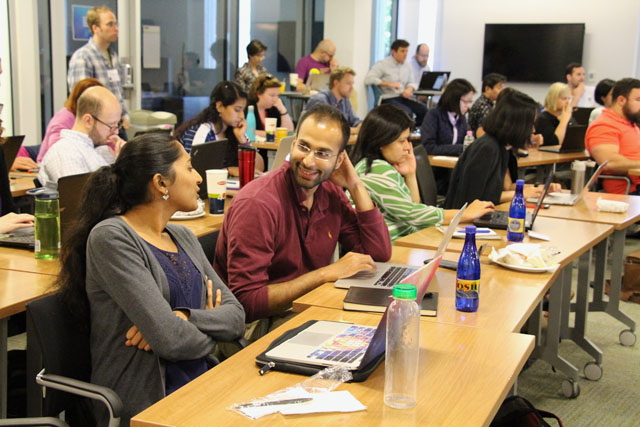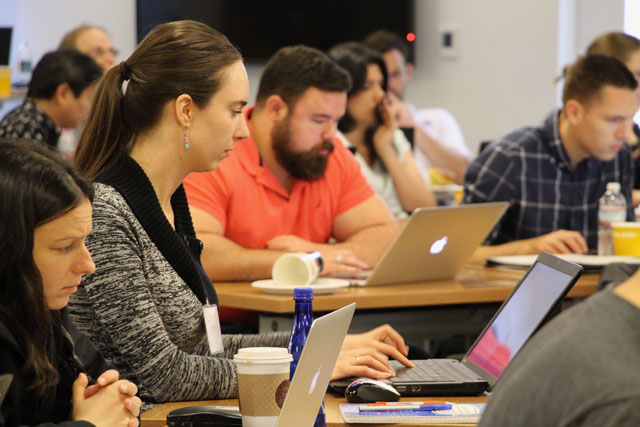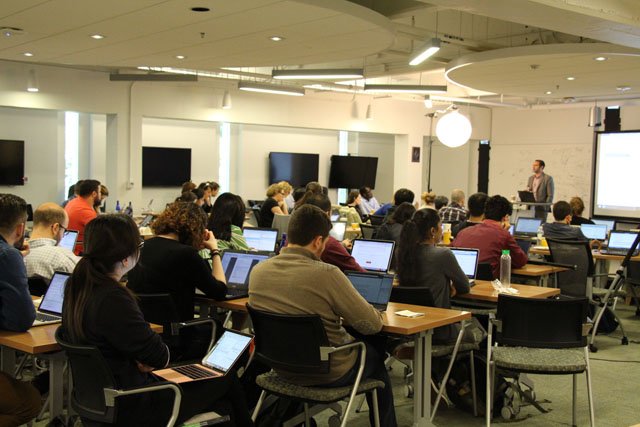From diet and exercise recommendations to the common cold, our health is often shaped by who we know and see on a regular basis. To better understand how these networks can have incredible implications for our health, social network analysis, particularly related to health and health care, has become a robust field of study in recent years.
But social network analysis methods aren’t yet standard faire in social science methods taught to health and health-policy scholars. The demand is clear. To help bridge this gap between demand and training, the Duke Network Analysis Center (DNAC), an SSRI affiliate, offers an annual intensive weeklong training program in early summer.
 A Weeklong Intensive
A Weeklong Intensive
The Social Networks and Health Scholars Training Program, a NICHD funded (R25) program, covers network methods that are rarely included in the standard social-science methods sequences taught to health and health-policy scholars.
An increasingly interdisciplinary area, economists, sociologists, and medical researchers have expanded the field in recent years, and as a result, increased demand even further. Last year, the National Science Foundation invested $40 million in network research.
“Social networks—the system of friends, family, neighbors, one is connected to—are a key feature of the social determinants of health. But, the tools necessary to study networks are somewhat unique in the social sciences, so the workshop fills a void in traditional training programs,” said James Moody, director of DNAC and DUPRI research scholar.
 In addition to the in-person training, there are also 12 fellows chosen from a group of postdocs, associate professors, and other early career scholars across the nation to work with a mentor on specific social network analysis projects.
In addition to the in-person training, there are also 12 fellows chosen from a group of postdocs, associate professors, and other early career scholars across the nation to work with a mentor on specific social network analysis projects.
The idea is to take a project from conception to completion over the course of a year create deep knowledge and help mentor the next set of fellows.
Around 60 other social network analysis scholars joined the fellows at this year’s event for the weeklong intensive.
“It’s a mix of lecture and lab. The labs are helpful because they give you a lot of R code, which is how most of the social network analysis that I do is done. So it’s good to get these quick intros,” said Chad Stecher, PhD candidate in the UCLA Economics Department and current DNAC Fellow.
Stecher is paired with mentor Seth Sanders, professor of economics and research scholar at the Duke Population Research Institute (DUPRI), an SSRI affiliate. Stecher’s project focuses on how social networks among physicians inform them of new treatments or better quality practices.
This program is an opportunity to form a national network of scholars and establish a foundation for what is sure to be an increasingly important field of research.
“By building around social networks and health, we hope to build a long-lasting community of scholars focusing on these questions,” Moody said.
Spreading Interest
The increasing demand in the academic world has been matched by an increasing demand in non-academic fields too.
In fact, Moody recently returned from the Centers for Disease Control (CDC) where he introduced a group of their investigators, largely working in the STD branch, to network methods. It’s a natura l fit, seeing as how STD spread is social in nature.
“STD spread is clearly a network phenomenon, and the CDC is particularly worried about the rapid rise in antibiotic resistant bacterial STDs, in addition to their portfolio on HIV, and the alarming increase in Syphilis cases,” Moody said.
“The hope is to develop skills in network modeling so that they can better understand what the risk for rapid spread is like in local communities,” he added.
The introduction to network methods is a step towards leveraging these sorts of tools to help inform surveillance work.
With scholars from across the nation interested in applying these tools to their work, and demand growing so rapidly, their insights will no doubt help shape our understanding of health and health-related in years to come.